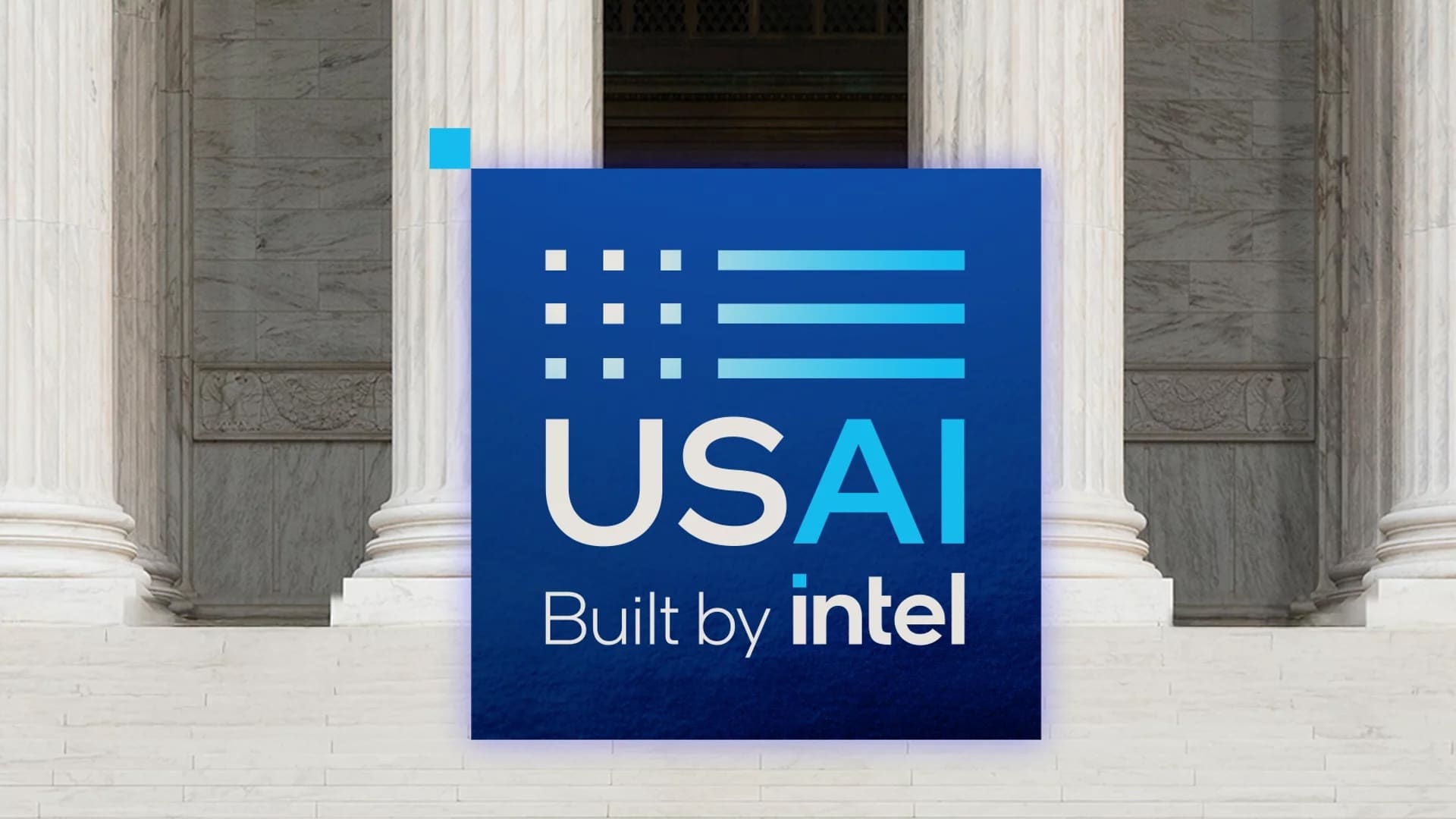The ongoing technological and geopolitical rivalry between the U.S. and China has taken a new turn with the announcement of Intel USAI, the world’s most ambitious semiconductor company’s initiative to strengthen its position as a key provider of chips and artificial intelligence for the U.S. government, its economy, and military.
The move comes after weeks of rumors and fiery statements from former President Donald Trump, who initially called for the removal of Intel CEO Lip-Bu Tan due to alleged ties with Chinese companies. However, after a face-to-face meeting, criticisms turned into praise, and Trump pledged “great things” for the company.
Soon after, the response was revealed: a roadmap that combines patriotism, cutting-edge technology, and multimillion-dollar public contracts.
“Created for the mission. Backed by trust”
With this motto, Intel introduced USAI as its new strategic brand for the public sector. The goal: provide solutions with advanced chips and secure, scalable AI models for federal agencies, military departments, and strategic organizations.
The company argues that technological modernization is essential in a context where agencies face greater demands for efficiency, cybersecurity, and data-driven decision-making. According to Intel, applying AI in the public sector can provide real-time insights, reduce response times to threats, and improve decision quality in critical situations.
Partnership with the Pentagon and EdgeRunner AI
A key pillar of the program will be collaboration with EdgeRunner AI, a firm specializing in secure language models for defense and intelligence. These models will be designed to operate in isolated environments (air-gapped), optimized for PCs with Intel hardware, and adapted for on-the-ground operations.
Some anticipated applications include:
- AI models for tactical analysis in military missions.
- Automation of administrative tasks to reduce operational costs.
- Strengthening cybersecurity for detecting and responding to cyberattacks on critical infrastructure.
Trump, TSMC, and Intel’s “Rescue”
Industry sources suggest this initiative is not only technological but also financial. An ex-Intel executive states that the company needs around $40 billion and an agile leadership to compete against TSMC, AMD, and NVIDIA in chips and AI.
Trump, who has publicly expressed his aim to “make Intel a winner,” is willing to channel grants and public contracts to boost its recovery. Part of the strategy involves forming an alliance with TSMC to manufacture AI chips in the U.S., leveraging Taiwan’s leader’s capacity and expertise.
A message full of symbolism
Intel’s public statement for USAI is loaded with references to national pride and technological independence:
“The future belongs to those who build it well. And it starts right here, at home, in the U.S. For over five decades, we’ve been the only U.S.-based company committed to advanced manufacturing on American soil to produce the world’s most advanced chips.”
The company also promises sustainable and resilient supply chains, integrated privacy and security in every processor, and an AI approach “that is accessible and responsible.”
A highly strategic and competitive market
In recent years, technological rivalry with China has accelerated the race for leadership in semiconductors and AI systems. U.S. export restrictions have limited Beijing’s access to advanced chips, creating opportunities for American firms like Intel to reinforce their roles in critical sectors.
Nevertheless, competition remains fierce. NVIDIA dominates the AI GPU market, AMD gains ground with high-performance processors, and TSMC continues to lead production with the most advanced nodes globally. With USAI, Intel aims to differentiate itself as the “trusted provider for America’s most trusted institutions.”
Challenges ahead
Despite the scale of the announcement, Intel’s challenge is substantial. It faces:
- Pressure to innovate quickly in a market where tech cycles are shortening.
- Fierce competition from better-positioned AI rivals.
- Political and public expectations for the project’s success, given its connection to national interests.
If the initiative succeeds, USAI could establish Intel as the key technological partner of the U.S. government in the age of AI. If it fails, the reputational and economic damage could be very hard to reverse.
Frequently Asked Questions
What is Intel USAI?
It’s Intel’s new strategy to develop and supply advanced chips and secure AI to the U.S. government, military, and public sector.Why is it linked to Donald Trump?
The former president publicly supported the initiative after meeting with Intel CEO Lip-Bu Tan and is expected to promote public contracts and grants for the project.What role does TSMC play?
TSMC could collaborate with Intel in manufacturing AI chips on U.S. soil, strengthening manufacturing capacity and reducing dependence on Asia.What are USAI’s main objectives?
Modernize public sector technology infrastructure, improve cybersecurity, streamline processes, and ensure U.S. technological sovereignty in AI and semiconductors.
via: Intel USAI


